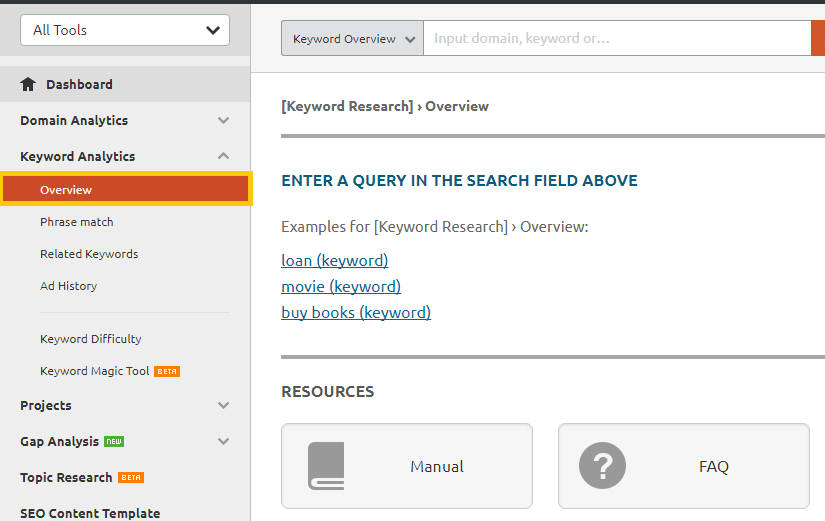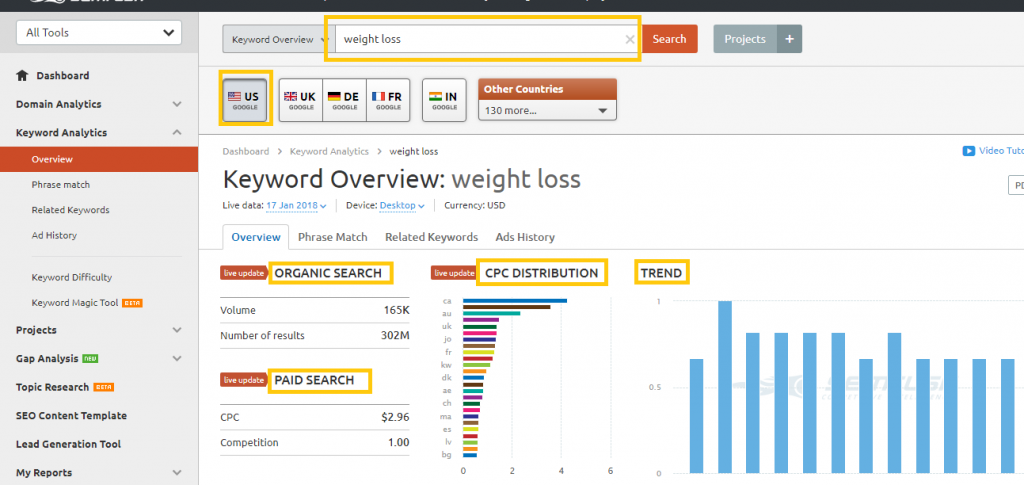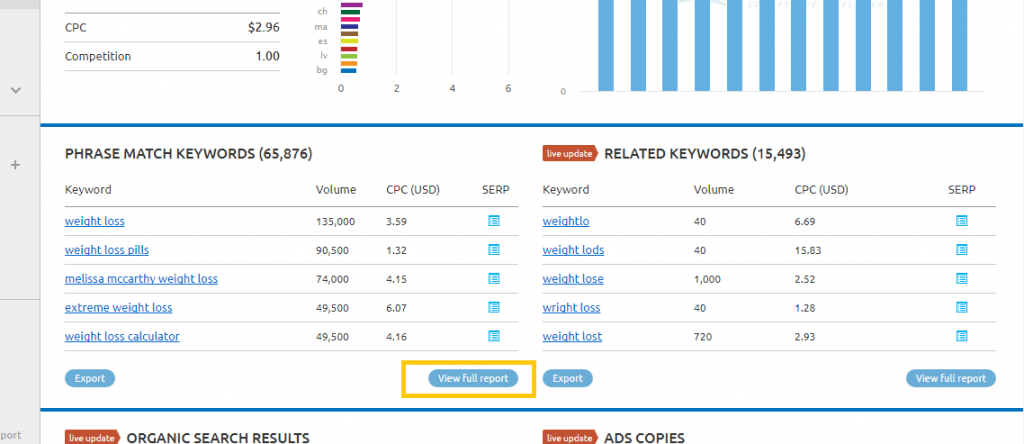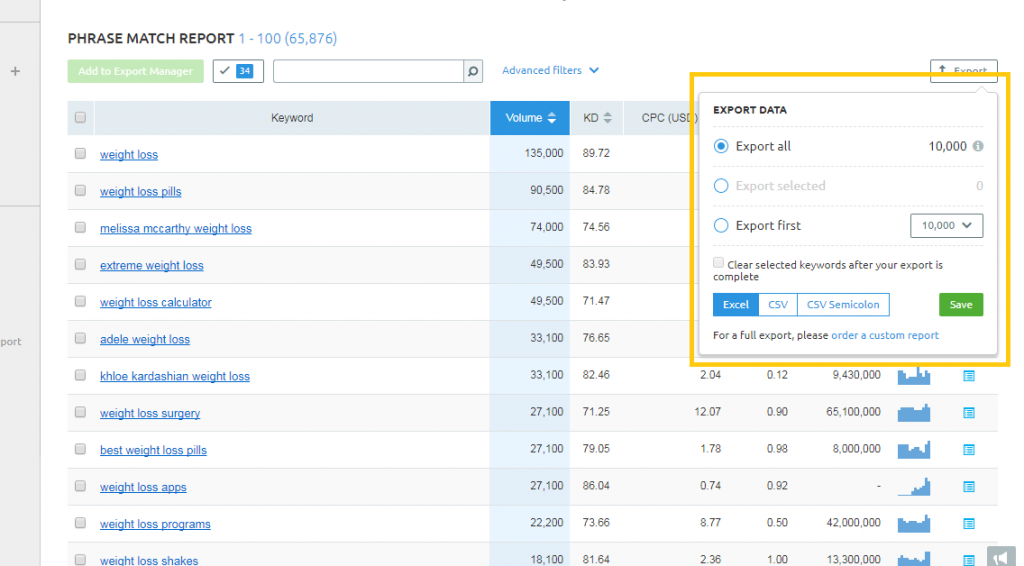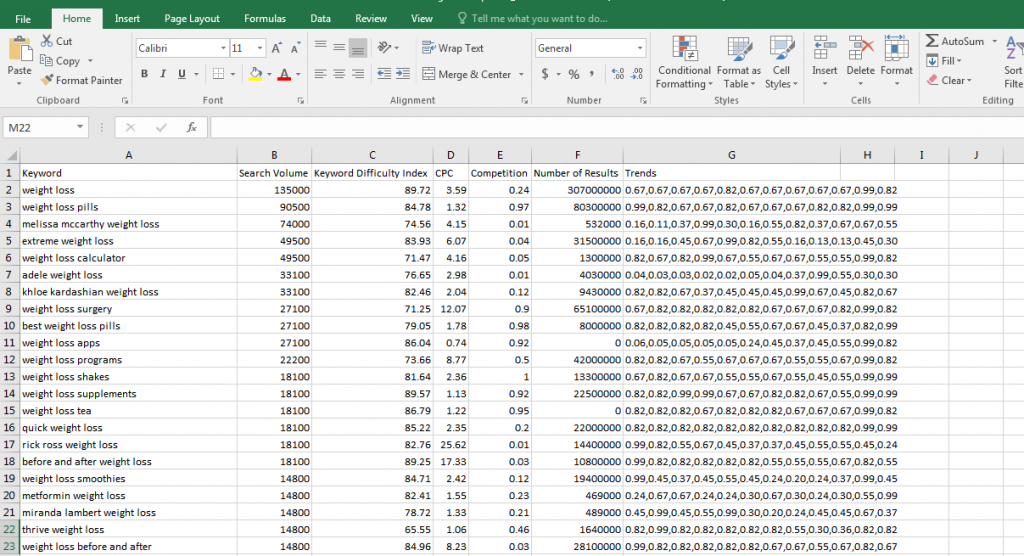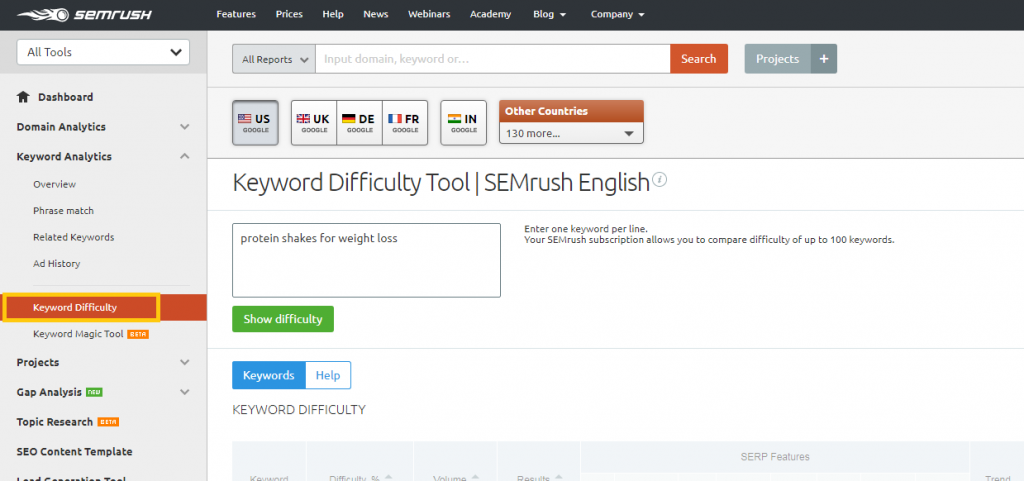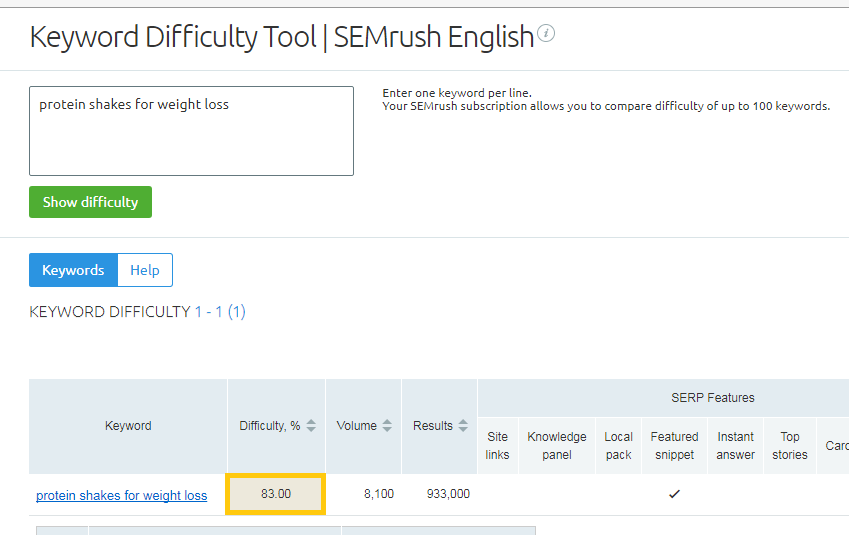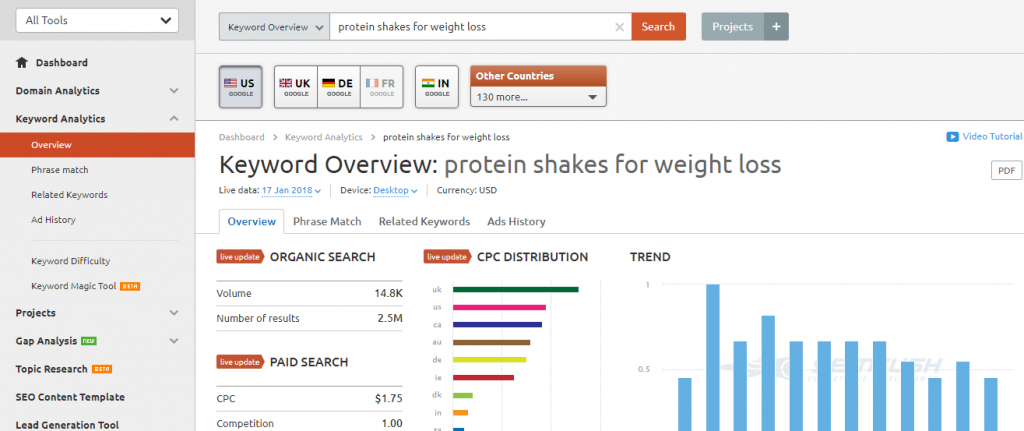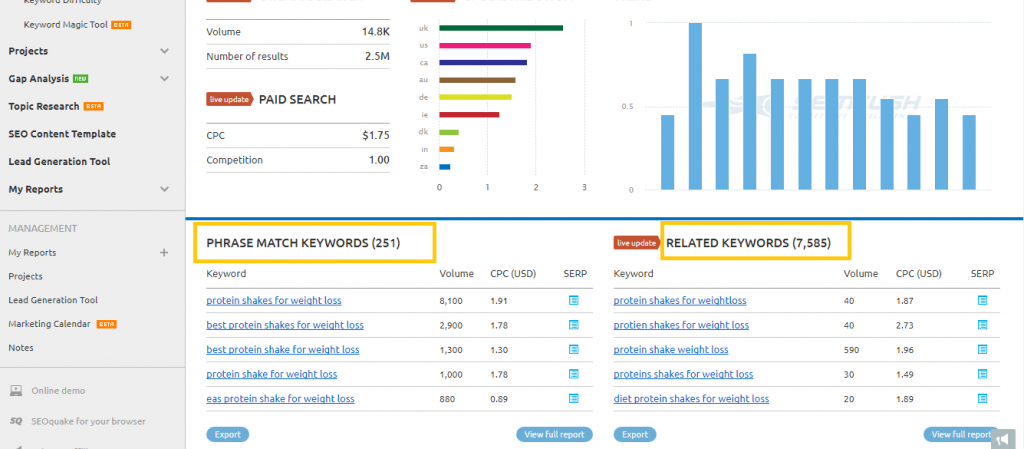If a business is not writing about its products in the same way customers are discussing the problems, there is zero chance it will be found in the search results. Keyword research is often tricky, but again, it is one skill every marketer needs to excel in. In this article, I’ll be providing you a complete step by step guide to perform effective keyword research using my favorite tool, SEMrush, which is one of the best tools for keyword research. Read- What is SEMRUSH? How It Ensures Blogging Success?
But first, why SEMrush for Keyword Research?
I know, I know there are various keyword research tools out there, but I prefer SEMrush over others. Here’s why: I understand that there are many free tools, who can help you do the same thing, but SEMrush provides it all under one umbrella. So that you use just one tool, and your keyword research is done.
Now that you are pretty much convinced of why SEMrush is my favorite (And will always be) let’s get started. In this guide, we will cover:
1. Getting Started on SEMrush
So here comes another series of questions. Which plan should I choose, free with a trial one or a pro one? If I choose the free trial, how do I use it for the maximum benefit? I totally understand your doubts, as these are the same questions I had in mind before I got started on SEMrush. Guys, whether you choose a free trial or a pro plan, is totally your call. But if your website is already generating decent revenue, I would highly suggest going for a pro plan. The reason being, a pro plan gives you very detailed information about your business and your competitors’ using which you can get far better returns. So now that you have created an account on SEMrush, you will be taken to the SEMrush dashboard. Here you can add your domain to monitor its performance. But since right now, our focus is keyword research, let’s jump on to that part. Now you will see a button named “Keyword Analytics” on the left sidebar. Click on it, and you will find the “Overview” button. Guys, this is your beginning point for SEMrush. So let’s get deeper.
2. Using Seed Keyword to Find Relevant Keywords
Now that your keyword research is started, the first step is to identify the seed keyword. A seed keyword is the foundation keyword that best represents your brand or product. Let’s say I sell a weight loss product, and then my seed keyword will be “Weight Loss”. All my other keywords will revolve around this seed keyword. So start with typing your seed keyword into the search bar. You will also see a country icon here. Make sure to set it right as per your desired country.
Here you will see four different reports on the result page. Let’s go through them one by one.
Organic Search
This section provides the search volume for your seed keyword, which is 16.5K for my keyword. The next section provides a number of search results against my seed keyword. In my case, it is 302M.
Paid Search
This part helps you find out if any of your competitors are bidding on this keyword along with the average bidding cost.
CPC Distribution
This section provides CPC value for different countries.
Trend
Here, you can see how popular this term has been against every month. This section is especially helpful if you are targeting any event since that will be a time-based niche. So friends, now that you are pretty much acquainted with these terms, scroll down the page, and you will find the option “View Full Report”. Click on it.
Now you will see the complete list of the keywords around your seed keyword, as shown in the screenshot below.
Click on the “Export” button, and it will give you all the data in Excel as below.
That’s a pretty huge data! First of all, remove the columns CPC, Competition, Number of results, and Trends as they are of no use right now.
3. Cleaning Your Data to Identify the Right Keywords
Now, as I said above, this data is pretty big, and you can’t target all of these keywords. The chances are that some of these keywords are not relevant to your business at all. Even if you are able to get ranked on them, you won’t get any benefits. Therefore you need to remove irrelevant and junk keywords so that you can focus on those who can bring benefits to your business. This is a manual effort. You need to check all the keywords one by one and create a list of keywords that are extremely relevant to your business.
4. Keyword Segregation Using the Keyword Difficulty Tool
Nobody can target all of the keywords and get ranked on all of them. Now that you have clean data in the list highlight keywords that are highly competitive as Red as they are not your current focus. Similarly, you need to find out keywords that are easy to target and put them on a separate tab. For this, you can also use the “Keyword Difficulty” tool by SEMrush. Keyword difficulty is a metric that tells you the average % of how competitive your keyword is. Your main target should be low competition keywords. For any particular keyword, keyword difficulty depends on various factors like on-page, off-page. Basically, keyword difficulty tells how difficult it is to rank a particular keyword. SEMrush also provides you the option to check keyword difficulty. You can find the option in the left sidebar. Click on it, and you will see a box where you need to type the keyword for which you want to check keyword difficulty.
Let’s say I have typed the keyword “Protein shakes for weight loss”, the score is 83%. This means the keyword is highly competitive and trying to get rank on it won’t be a wise choice, so I will pass it.
This way, you can know which keywords are easy to target and which are not. Once this step is done, you will have different sets of keywords, mainly categorized in,
Easy to Target Moderate Highly Competitive
Now that you have the right keywords by your side, let’s move on to the next step.
5. Identifying Phrase Match and Related Keywords Around Targeted Keyword
Now that you have found some easy to target keywords to get started, it is time to identify the phrase match and other related keywords around it. From your list of “Easy to target” keywords, pick one keyword, and choose it as the seed keyword. Go to the search box and type this keyword. Let’s say our keyword is “protein shakes for weight loss”.
Scroll down, and you will see “Phrase Match Keywords” and “Related Keywords”. Export both of these lists one by one.
Now go to your “Easy to target” tab and create new columns as “Phrase Match keywords” and “Related Keywords” and paste these keywords in the respective columns. Again, manually examine all the keywords and remove irrelevant or repetitive keywords. Make sure to keep the list as tidy as possible. Keep around 20 targeted and extremely relevant keywords around in the phrase match and related keyword. Keep doing this for all your keywords, and you are done. You can register here for free.
Wrapping It Up!
I hope this guide has helped you build a pile of keywords for your business. Always keep in mind, no tool can replace your brain and analytical skills.

